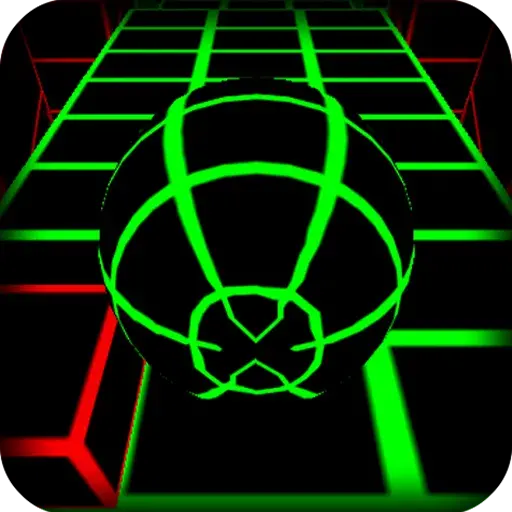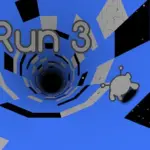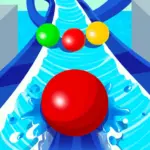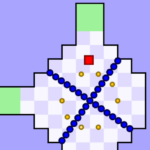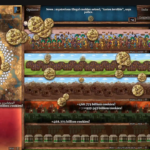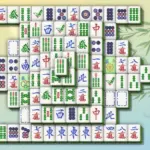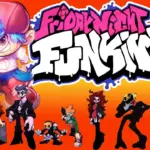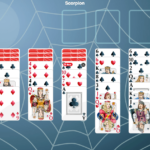Junji Ito’s horror masterpiece Uzumaki has captivated manga readers for decades with its haunting imagery and psychological terror. At the heart of this twisted tale lies the spiral – a seemingly innocuous shape that takes on sinister significance as it slowly consumes the town of Kurouzu-cho. Let’s dive deep into the symbolic power of the spiral in Uzumaki and how it reflects broader themes in horror manga.
The Spiral as a Force of Nature
In Uzumaki, the spiral is portrayed as an unstoppable natural phenomenon that defies human comprehension. As the story unfolds, we see the spiral manifest in increasingly bizarre and terrifying ways – from hypnotic patterns in the clouds to human bodies contorting into grotesque spiral shapes. This reflects a common theme in cosmic horror of nature as an indifferent, alien force beyond mortal understanding.
The spiral’s ubiquity in nature – from galaxies to snail shells – takes on a menacing quality in Ito’s work. What was once beautiful becomes a source of existential dread as characters realize the spiral’s influence is inescapable. This subversion of natural imagery is a hallmark of body horror manga, unsettling readers by making the familiar strange and threatening.
Obsession and Madness
As the spiral’s power grows, many of Kurouzu-cho’s residents become obsessed with its hypnotic form. This descent into spiral madness is one of Read Uzumaki Manga Free Online most disturbing elements, showcasing how an idea can infect the mind like a virus. Characters find themselves compulsively drawing spirals, seeing them in everyday objects, and even transforming their bodies to emulate the shape.
This theme of obsession ties into larger trends in psychological horror manga, where characters’ inner demons manifest in reality. The spiral becomes a visual metaphor for the destructive nature of fixation and the fragility of the human psyche when faced with incomprehensible forces.
The Uzumaki Curse
The concept of the “Uzumaki curse” in the manga presents the spiral as a malevolent, almost sentient entity. This anthropomorphization of an abstract concept is a clever storytelling device that gives the horror a focal point. Readers can track the curse’s spread like a contagion, building tension as it infects more of the town.
Cycles of Horror and Repetition
The spiral’s form inherently suggests repetition and cycles, a theme Ito explores throughout Uzumaki. The town’s history is revealed to be a series of recurring tragedies, with the spiral’s influence waxing and waning over generations. This cyclical nature of horror is a common trope in manga, often used to create a sense of inescapable doom.
In Uzumaki, the spiral’s endless form becomes a metaphor for the characters’ futile struggles against fate. No matter how they try to escape or resist, they find themselves drawn inexorably back into the spiral’s influence. This reflects existential themes often found in horror manga, questioning free will and humanity’s place in an uncaring universe.
Visual Storytelling Through Spirals
Ito’s mastery of visual storytelling is on full display in Uzumaki, with the spiral motif integrated seamlessly into the artwork. Panels and page layouts often incorporate spiral elements, subtly reinforcing the theme and creating a sense of unease even in quieter moments. This attention to visual design is a hallmark of great horror manga, using the medium’s unique strengths to heighten the atmosphere of dread.
The Spiral as a Symbol of Transformation
Throughout Uzumaki, we see characters and objects undergo horrific transformations as they succumb to the spiral’s influence. Human bodies twist into impossible shapes, inanimate objects come to life, and the very landscape of Kurouzu-cho warps to reflect the curse’s power. This theme of transformation is central to body horror manga, tapping into primal fears about the loss of bodily autonomy and identity.
The spiral’s transformative power can be seen as a dark reflection of natural growth and change. In nature, spiral patterns often represent positive evolution and expansion. Ito subverts this, presenting spiral transformations as grotesque and unnatural. This juxtaposition of growth and decay is a common element in horror manga, blurring the lines between life and death.
The Eye of the Spiral
One of Uzumaki’s most iconic images is that of spiral-infected eyes, with characters’ irises warping into hypnotic patterns. This visual motif taps into the universal fear of body horror while also symbolizing the way the spiral distorts perception. As characters fall deeper under the curse’s influence, their view of reality becomes as twisted as their physical forms.
Legacy and Influence
Uzumaki’s innovative use of the spiral motif has had a lasting impact on horror manga and beyond. The series’ success helped popularize the “spiral curse” concept, which has since appeared in various forms across manga, anime, and even Western media. Ito’s ability to imbue a simple shape with such menacing power showcases the potential for abstract horror in visual storytelling.
The spiral’s symbolic importance in Uzumaki has made it an iconic image in manga fandom. Fans often incorporate spiral motifs into artwork, cosplay, and merchandise, demonstrating the lasting impression Ito’s creation has made. This cultural impact highlights how effective horror manga can transcend its genre, becoming a touchstone for broader artistic expression.
Uzumaki’s exploration of spiral symbolism has also influenced academic discussions on horror manga. The series is often cited in analyses of visual metaphor, body horror, and cosmic dread in Japanese comics. This scholarly attention further cements Uzumaki’s place as a seminal work in the horror manga canon.
In conclusion, the spiral in uzumakimanga.net serves as a powerful symbol that encapsulates themes of obsession, transformation, and cosmic horror. Junji Ito’s masterful use of this motif demonstrates the unique storytelling potential of manga, creating a work that continues to unsettle and fascinate readers. The spiral’s legacy in Uzumaki has left an indelible mark on horror manga, inspiring creators and captivating fans for generations.
We’d love to hear from you! How has Uzumaki’s use of the spiral motif impacted your experience with horror manga? Share your thoughts and favorite spiral-inspired moments in the comments below!
